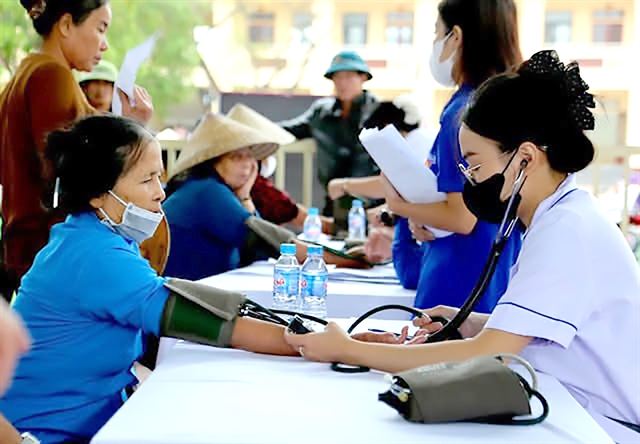 Life & Style
Life & Style

Pink Eye (or conjunctivitis in medical terms) refers to an inflammation or infection of the thin membrane lining the inner surface of the eyelids and the eyeballs- the conjunctiva.
 |
| Dr. Quy Vuong Van. — Photo courtesy of Hanoi French Hospital. |
by Dr. Quy Vuong Van*
What is it?
Pink Eye (or conjunctivitis in medical terms) refers to an inflammation or infection of the thin membrane lining the inner surface of the eyelids and the eyeballs- the conjunctiva.
What are the symptoms?
Conjunctivitis can affect one or both eyes and symptoms include eye(s) which:
· Turn pink or red
· Weep or ooze a gooey liquid
· Have an itchy, scratchy sensation
· Are encrusted or difficult to open in the morning
Symptoms can be associated with that of a common cold, sore throat, runny nose, swollen glands and fever. This is especially common in viral conjunctivitis during winter time.
What causes conjunctivitis?
There are four main types:
· Viral (mostly Adenovirus)
· Bacterial
· Allergic
· Non-Specific
Who can get conjunctivitis?
The sad answer is everyone, from the toddler to the granny. People with a compromised immune system such as diabetics or people taking certain medications are more likely to catch it.
How can I get it?
Viral and bacterial conjunctivitis are highly contagious. They can be easily transmitted from person to person, or from objects that have been in contact with an infected person’s eye secretions. For example, a person rubs his eyes and then touches a door knob, or a handle in the bus, the next person opens the door or touches a surface and then rubs his eyes. It is really that simple….this is also why it usually affects multiple family members.
Once you get it in one eye, the second eye usually becomes infected within 24 to 48 hours.
Allergic conjunctivitis is not contagious but a reaction to an allergen, mostly airborne. Both eyes are red, itchy and watery without yellowish discharge.
Non-specific conjunctivitis is also not contagious, can occur after an injury, in people who don’t produce enough tears or after chemical exposure.
How will I know I have conjunctivitis?
If you have of the above symptoms or have any other family member with conjunctivitis, ask your doctor for advice.
When should you immediately see a doctor?
·Your eyes feel tender
·You have difficulty seeing clearly, are sensitive to light or can’t keep your eyes open
·Severe headaches with nausea
·Recent eye injury
·You use contact lenses (to rule out corneal infection)
How is it treated?
It is important to make a correct diagnosis first, because the treatment depends on the cause.
There is no cure for viral conjunctivitis but antihistamine/decongestant eye drops may relieve some symptoms. Another option is to use warm or cool compresses. Importantly, use the drops only in the affected eye and wash your hands afterwards. Recovery begins within days, but symptoms frequently get worse for the first few days, and improve subsequently over 2-3 weeks.
Most types of bacterial conjunctivitis resolve in a couple of days when treated with antibiotic eye drops or ointment.
For allergic and non-specific conjunctivitis artificial tears or eye drops containing antihistamines or corticosteroids may bring some relief.
Can I prevent conjunctivitis?
Simple hygiene measures can prevent infection:
· Do not share handkerchiefs, tissues, towels, cosmetics, or bed sheets/pillows, soft toys with infected persons.
· Wash your hands frequently with plain soap, especially before and after touching your eyes, sneezing or coughing.
· Use alcohol based hand rubs when not at home.
*Dr. Quy Vuong Van is a specialist in Ophthalmology who has joined the Hanoi French Hospital, bringing his expertise to our customers and colleagues.
If you have any questions or concerns regarding conjunctivitis, prevention and treatment, please contact us at 84 – 24 3577 1100, access www.hfh.com.vn, or email us at contact@hfh.com.vn. Address: 1 Phương Mai, Đống Đa, Hà Nội




 (1).JPG)